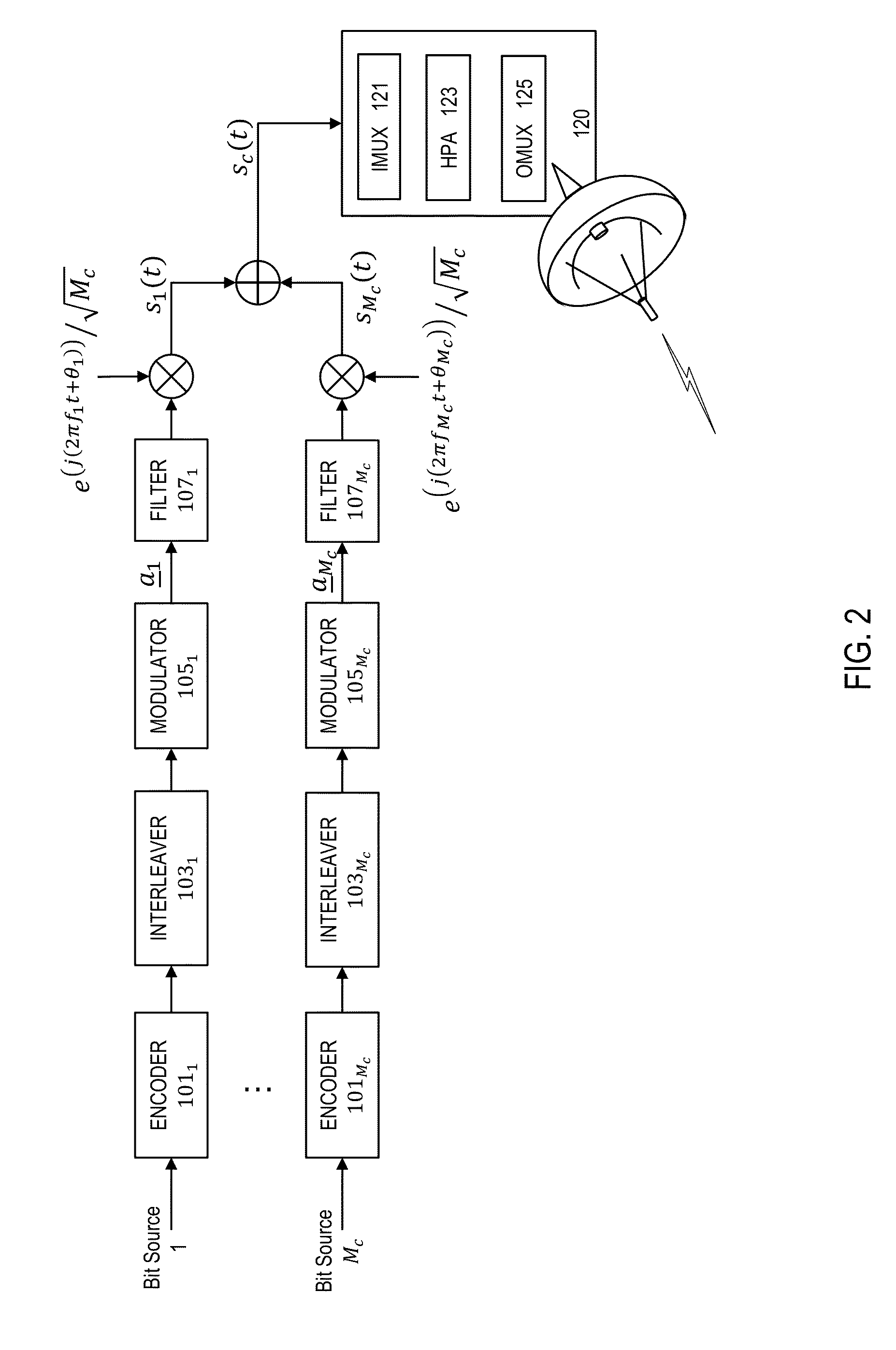Multicarrier successive predistortion for digital transmission
a digital transmission and multi-carrier technology, applied in the field of multi-carrier successive predistortion for digital transmission, can solve the problems of interference in the output channel strict power consumption limits of the satellite, and interference in the output of the current symbol, so as to reduce the amount of imd-induced clustering and mitigate the nonlinear distortion
- Summary
- Abstract
- Description
- Claims
- Application Information
AI Technical Summary
Benefits of technology
Problems solved by technology
Method used
Image
Examples
Embodiment Construction
[0025]Approaches that provide improved compensation for mitigating nonlinear distortion in high throughput multicarrier satellite communications systems (employing HPAs that process composite multicarrier signals for transmission over respective satellite channels, where the HPAs operate at or near saturation), which can be deployed entirely at the transmitter or gateway, are described. In the following description, for the purposes of explanation, numerous specific details are set forth in order to provide a thorough understanding of the present invention. The present invention is not intended to be limited based on the described embodiments, and various modifications will be readily apparent. It will be apparent that the invention may be practiced without the specific details of the following description and / or with equivalent arrangements. Additionally, well-known structures and devices may be shown in block diagram form in order to avoid unnecessarily obscuring the invention. Fu...
PUM
 Login to View More
Login to View More Abstract
Description
Claims
Application Information
 Login to View More
Login to View More - R&D
- Intellectual Property
- Life Sciences
- Materials
- Tech Scout
- Unparalleled Data Quality
- Higher Quality Content
- 60% Fewer Hallucinations
Browse by: Latest US Patents, China's latest patents, Technical Efficacy Thesaurus, Application Domain, Technology Topic, Popular Technical Reports.
© 2025 PatSnap. All rights reserved.Legal|Privacy policy|Modern Slavery Act Transparency Statement|Sitemap|About US| Contact US: help@patsnap.com



